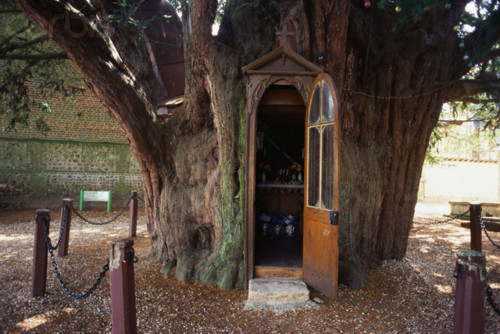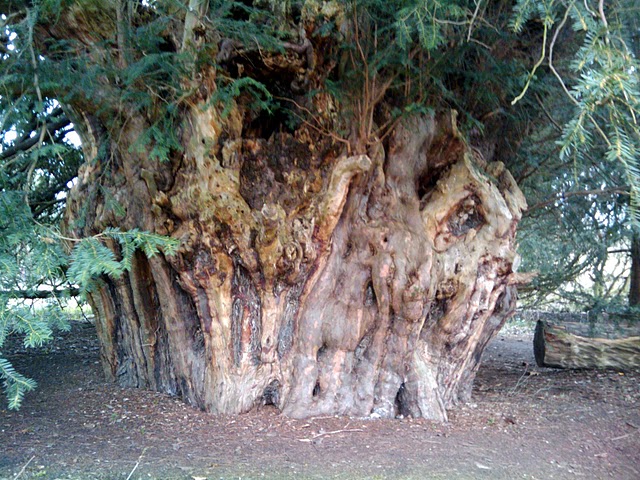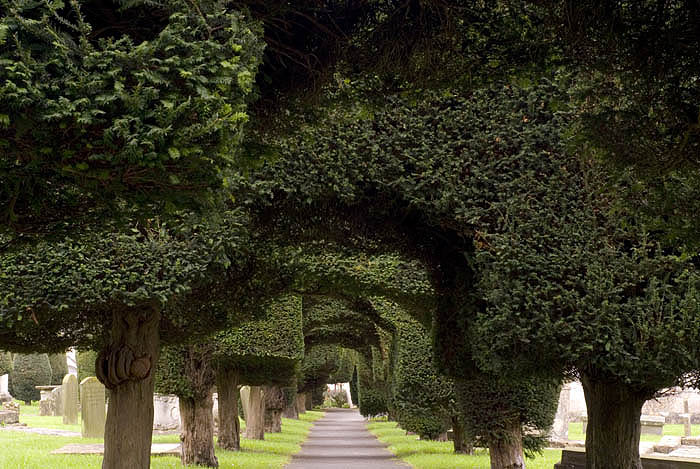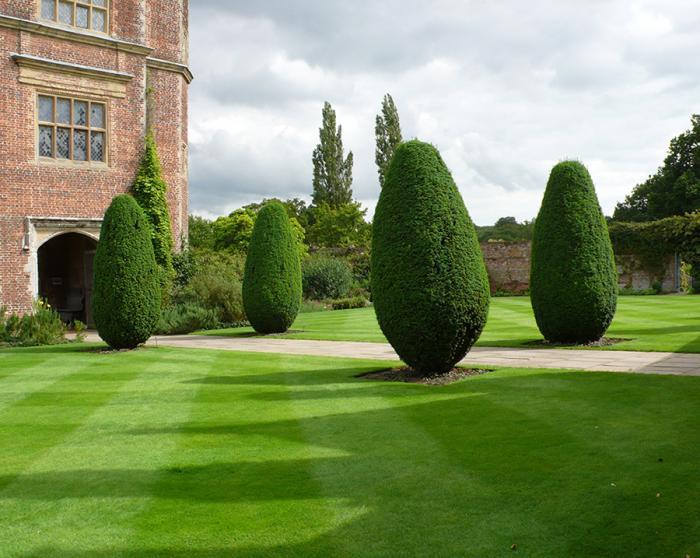Yews are interesting evergreens for they come in all shapes and sizes, depending on the subspecies, and can tolerate a wide range of sunlight and soil conditions. The shrubs can be sculpted and formalised, while the tree forms can grow for millennium creating twisted, ancient and mysterious shapes. With this much versatility, it’s no wonder the yew is ubiquitous around the world. It’s so common that it’s often overlooked in favour of something more exotic to grace yards with. However, it’s worth taking a second look at the humble yew to see if it may be the answer to your garden dreams.
The tree form of yews are unique in that they hollow as they age, thus rendering it impossible to accurately determine the age of a tree. Despite of this, the yew has a long and varied history. It is well known that the trees have been used for some of the finest wooden bows, but the arils can also, apparently, be made into jams and preserves or brewed into wine . More surprisingly, however, would likely be the early use of yew extracts used as a reliable, efficient, and renewable source of bio-pharmaceuticals .
A word of caution: All parts of this breath-taking plant are poisonous, except the red berry. However, the seed that grows and matures inside the berry is also poisonous, and not safe to eat . Make sure you tell your kids not to snack on it!
Yews are quite possibly one of the most varied types of plants you can find. With hundreds of cultivars to choose from, you can pick anywhere from tall and thin to short and round. Yews may be left unmanaged for a slightly wilder look, or they can be trimmed once a year for a manicured touch. Take a look at the gallery below the information tabs for a few ideas of how yews have been used in landscaping.
Zone
While there are some variants, most yews are hardy in zones 4 – 7 provided they receive some shelter from the coldest of winters. Some plants may experience frost burn, so check the particular cultivar you want to purchase to be sure of it’s winter needs.
Sun
Yews are wonderfully versatile and can take full sun to a nearly deep shade. They cannot tolerate full shade, though, so don’t put them in an area that receives very little sun. They will do well in areas that are dappled light all day long provided there are not long periods of only shade.
Soil
Yews prefer a neutral pH and well draining soils.
Water
Yews, like many other evergreens, do not like wet feet. They will do decently in slow draining soils provided their roots are allowed to dry thoroughly between waterings.
Maintenance:
Yews are relatively slow growers, which means that it needs to be clipped only once per year (in late summer) to keep it well manicured. However, you can go for a few years before some of the low, spreading habits need to be pruned to keep them under control.
- La Haye-de-Routot, France — Saint Anne Chapel lies within the hollow trunk of one of two 1,000-1,300 year old Yew trees in the cemetery at La Haye-de-Routot village in the Brotonne Regional Park in Normandy, France. — Image by © Chris Hellier/CORBIS
- The large, knobby Ankerwycke Yew takes hundreds of years to grow, but it is the stuff fairytales and children’s playgrounds are made of.
- Painswick, near Stroud, Gloucestershire, England. The parish church of St. Mary sits amongst 99 yew trees in one of England’s most memorable churchyards.
- Yews used on urban landscaping can add a touch of old world charm.
- In Sissinghurst, Toronto you can find these examples of the Irish Yew gracing a walkway.
Bibliography





